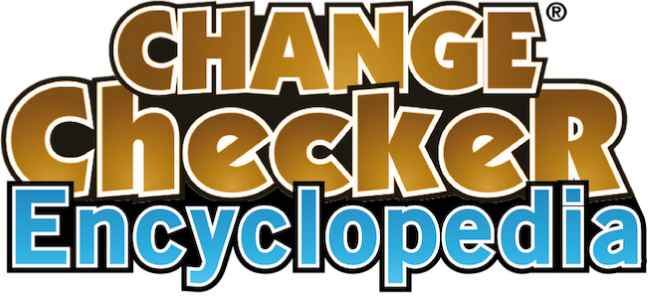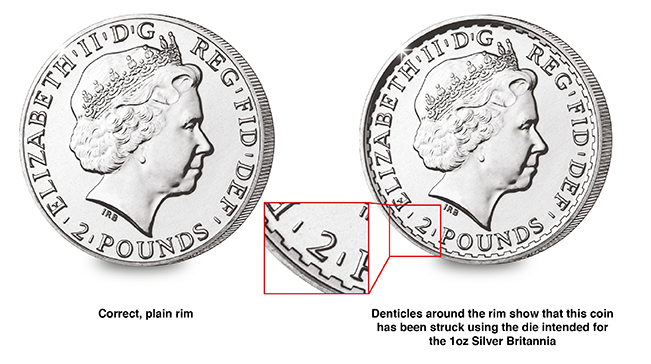General info
Canada has just released the world’s first glow-in-the-dark coin into circulation…
On the 1st July 2017, Canada turned 150. To celebrate, The Royal Canadian Mint released a once-in-a-life-time set of coins highlighting this milestone event in Canadian history.
And one of them glows in the dark!
The two-dollar coin, (or toonie), celebrates the wonders of Canada with an evocative design featuring the Northern Lights and it even glows in the dark thanks to special ink that contains luminescent material.
The specially designed two-dollar coin, which was issued to celebrate the 150th anniversary of Canada, features two people paddling in a canoe as the northern lights dance high above – which the Cree peoples called “the dance of the spirits”.
When the coin is put in the dark, the aurora borealis glows softly, thanks to a new ink formulation that contains luminescent material.
Just 3 million of these coins were released into general circulation in Canada, meaning just one in ten Canadians were able to find one in their change.
There is no doubt that these coins would create a collecting frenzy if a similar event like this was to happen in the UK.

5 brand new coins have been struck by The Royal Canadian Mint to celebrate the 150th anniversary of Canada.
In fact, each and every one of these special Royal Canadian Mint releases have become a collector’s item and going by previous issues, 25 cents and $2 coins are extremely difficult to get hold of.
If you’re interested in coin collecting, our Change Checker web app is completely free to use and allows users to:
– Find and identify the coins in their pocket
– Collect and track the coins they have
– Swap their spare coins with other Change Checkers
Sign up today at: www.changechecker.org/app
Round £1 Coin transition date sooner than expected!
The Royal Mint initially predicted that the number of new 12-sided £1 coins in circulation would overtake the Round £1 Coin by August this year.

12-sided £1 Coins will overtake the Round £1 Coin by July
However, due to the amount of coins that have already been returned, 8 million in total, the date has been revised to as soon as late July. Of the returned coins, most will be re-used to produce new 12-sided £1 coins, with the rest being disposed of.
This is important news for industries that deal in large quantities of £1 coins, such as vending and arcade machines, who’ll need to bring forward their machine conversation date.
Most importantly, for Change Checkers this means it is going to become increasingly challenging to complete The Great One Pound Coin Race. However, we know that you love a challenge and we’re here to help you get across the finishing line.
For all the best Round £1 Coin collecting hints and tips, take a look at our video:
[youtube https://www.youtube.com/watch?v=3b9A6IzcfUY&w=560&h=315]
For the brave ones amongst you, you can still sign up to The Great One Pound Coin Race, there’s still over 100 days to go!
Good Luck!
Change Checker Encyclopedia – Coin terminology made easy!
 The thing we love about coin collecting is that anybody can do it…but, we’re aware that to those who are not seasoned collectors, some of the terminology can be a bit daunting. So we decided to draw up a go-to terminology list, the Change Checker Encyclopedia, to ensure you never confuse your ‘base metal’ from your ‘bi-metallic’ again!
The thing we love about coin collecting is that anybody can do it…but, we’re aware that to those who are not seasoned collectors, some of the terminology can be a bit daunting. So we decided to draw up a go-to terminology list, the Change Checker Encyclopedia, to ensure you never confuse your ‘base metal’ from your ‘bi-metallic’ again!
Face Value
The face value of coins is usually its legal value. However, their market value usually doesn’t bear any relationship to the face value as collectors pay close attention to the coin’s metal content, finish and rarity.
Obverse
This is the side of the coin which features the monarch’s head- hence “Heads”
Reverse
This is the opposite side of the coin to the monarch’s head and commonly referred to as “tails”. This will usually feature an emblem or another design.
Circulated
These are the coins that you find in your change. As they’ve been circulated among the population they’re likely to show some wear and tear.
Uncirculated
A coin in a new condition fresh from the Mint originally intended for circulation but not circulated. Usually they have some small scratches and marks.
Brilliant Uncirculated
These coins are struck to a superior finish and don’t have the scratched or blemishes you’ll find on the coins in your change.
Proof
‘Proof’ refers to the finish of a coin and is often a favourite amongst collectors. Proof coins are struck several times with special highly polished dies and usually have a mirror lustre finish, with frosted relief.
Blank
This is a disc-shaped piece of metal onto which a coin image is struck or pressed
Base Metal
This is a common and inexpensive metal, usually either Cupro-Nickel or Nickel Brass, used to produced coins for circulation.
Milled Coin
This is any coin that has been struck in a coining press.
Die
This is a block of hardened metal that has a design or effigy engraved on to it. It is used to impress the design onto a coin blank.
Strike
This is the final stage of the coin making process where an image is pressed (using huge force created by two dies) onto both sides of a coin blank.
Bi-Metallic
A coin made from the combination of 2 metals or alloys, our £2 and the new 12-sided £1 coin are good examples.
Mis-Strike
The striking process is never fully exempt from human error and sometimes a coin can become mis-aligned during the striking process, making it a mis-strike.
Error
Genuine errors, such as the undated 20p and ‘silver’ 2p are extremely rare. If you think you’ve found one you can send an image to [email protected] and we would be happy to take a look.
Mule
A mule coin is struck with an obverse and reverse that is not meant to be paired, such as this 2014 ‘Year of the Horse’ coin.
The wrong obverse (Queen’s head) die was selected when the coin was struck, leaving just 17,000 of the several hundred thousand mintage with the incorrect finish around the edge of the coin. No-one noticed until it was too late and the coins had already been released to bullion dealers.

Mintage Figures
Simply speaking the mintage figure is the total quantity of a specific coin that has been struck. This can be higher than the ‘edition limit’ depending on how the coin is offered. Mintage figures are only one of the guides to the collectability of coins as over time coins will be withdrawn from circulation due to damage, they may get lost or be retained by collectors.
Mint
This refers to any organisation authorised to strike coins and medals. The British Royal Mint is one of the oldest and most respected in the world dating back to the 7th century.










